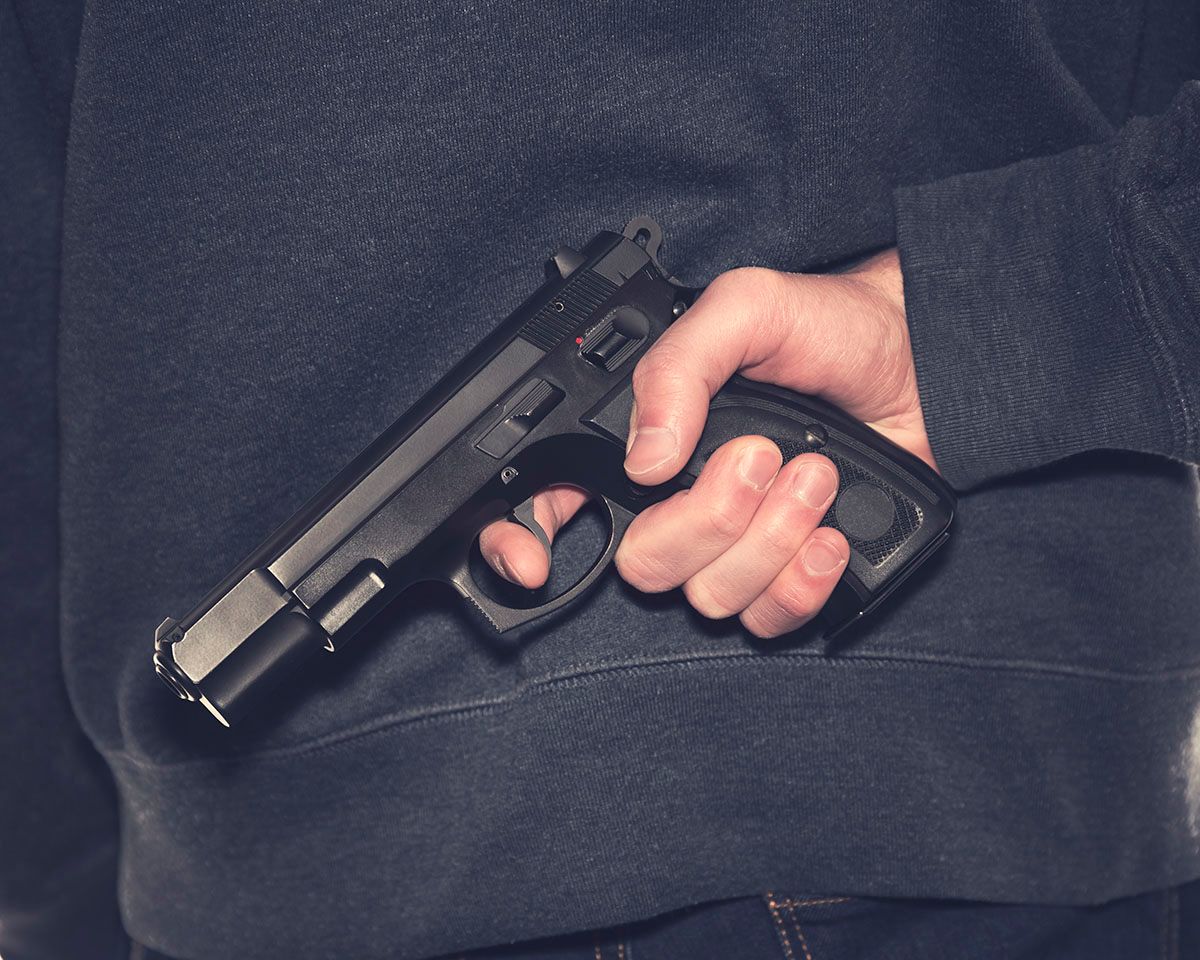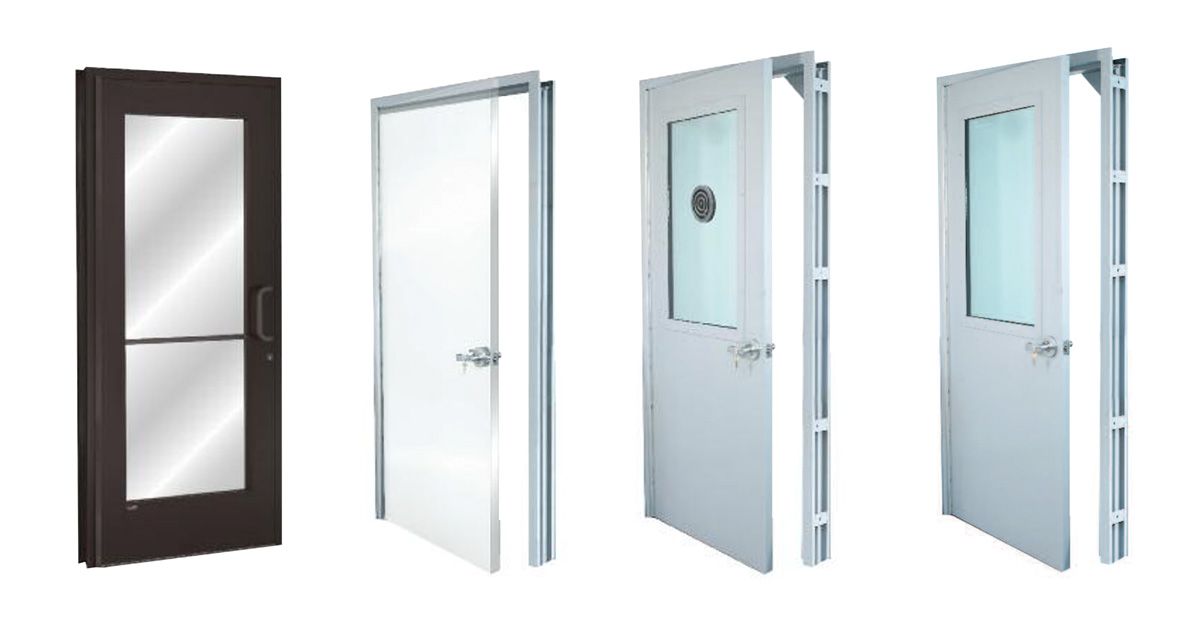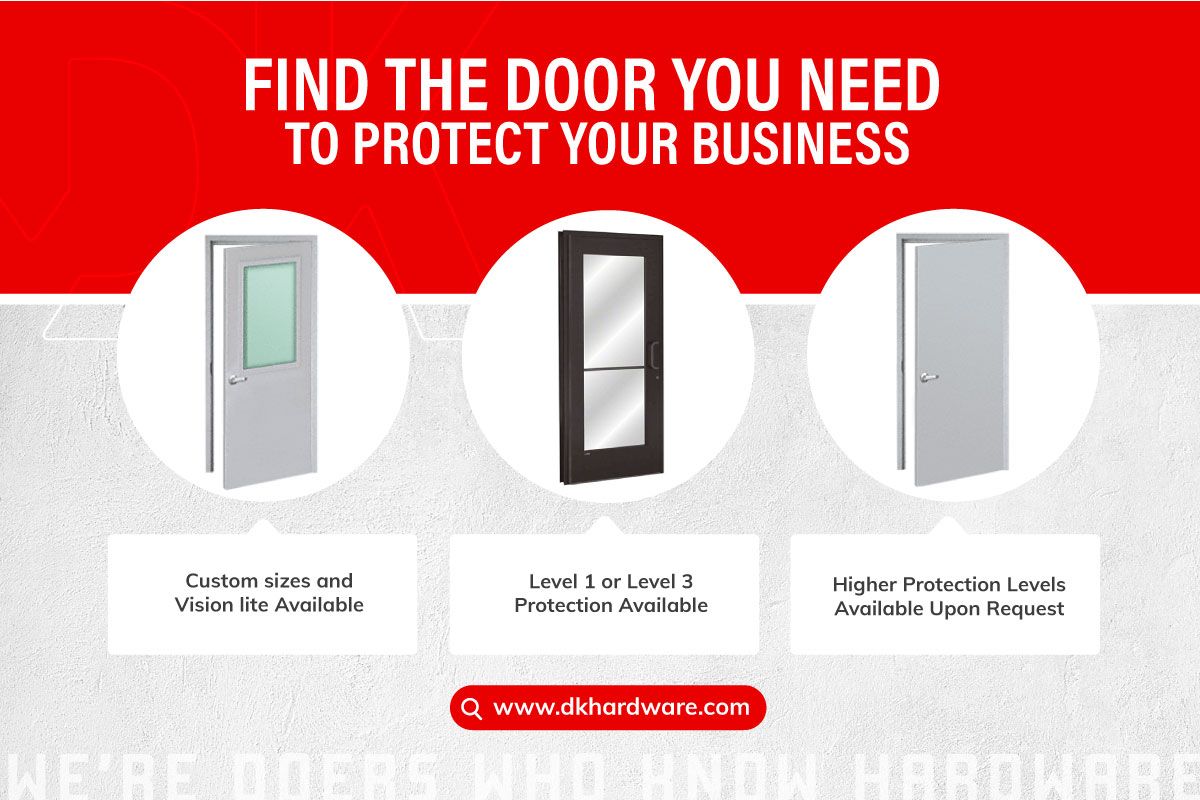Level 1 to Level 3 Door Protection: What's the Difference?
Although each facility requires a unique security system, virtually every building needs safety from forced entry. The challenge lies in assessing the degree of appropriate protection to determine the most suitable products. The use of bullet-resistant materials can protect employees and deter theft from crimes involving firearms. These products are extensively used at cash counters, banks, pharmacies and other businesses that manage cash or narcotics in high-risk areas.
A door assembly is often a building’s first line of defense and can drastically decrease the risk of harm to people or property. Read on to understand the basics of Level 1 to 3 protection. This will help you make an informed purchasing decision to provide the right level of safety for your employees and facility.

Reducing the Risk of Forced Entry
Bullet-resistant doors are usually made using formed, heavy-gauge steel face sheets encompassing a custom-engineered steel rib core. They are constructed at eight different protection levels, which indicate the number of shots a door can resist from a particular caliber of bullet.
Security levels for bullet-resistant systems are established by Underwriters Laboratory, the chief tester for materials used in these bullet-resistant systems. Each level has been found efficient at arresting projectiles typically used during an armed robbery (e.g., a level 1 door can stop three shots from a 9 mm, and a level 8 can endure five shots from a .308 caliber rifle).
Level 1: Provides protection against 9mm Full Metal Copper Jacket with Lead Core
Level 2: Provides protection against .357 Magnum Jacketed Lead Soft Point
Level 3: Provides protection against .44 Magnum Lead Semi-Wadcutter Gas Checked

While these UL ratings extend to Level 8, the requirements of most banks, credit unions and convenience stores are met by Levels 1-3.
Higher-rated materials are generally thicker, heavier and more expensive. Moreover, there may be limited availability of materials and accessories at these higher levels. Although it may seem like a good idea to seek maximum protection, a level 2 or 3 door offers ample protection for most buildings.
Picking a Safe Solution for Your Application
As you plan your project design, you must weigh your risks. What are the potential threats that your facility, community and workers face? How likely is the threat? And most importantly, how exposed do those threats make you and your employees feel? For best results, select bullet-resistant materials only after conducting a comprehensive security assessment. Investing in physical security may seem like a large one-time cost, but it can yield long-term benefits, if done correctly.
Find the right solution here

For quotation contact via email: sales@dkhardware.com or Toll Free: 877-509-8040